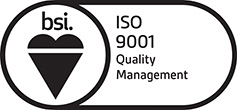What is Liquid Penetrant Test Inspection?
Liquid Penetrant Testing (PT) also referred to as liquid penetrant examination or dye penetrant testing is a non-destructive test (NDT) method that utilizes capillary forces to identify surface-breaking flaws, such as cracks, laps, and porosity. This technique involves applying a liquid or dye to the surface of the material being tested, which then seeps into any cracks or other imperfections. A developer, typically a dry powder, is then applied to the surface to draw the penetrant from within the flaw and produce a surface indication. The process can locate cracks not visible to the naked eye. PT is often used to locate deficiencies in welds, pipes and bars, among other materials both ferrous and non-ferrous materials. By using this method, technicians can quickly and accurately identify any defects in the material. This makes it an ideal testing method for a wide range of applications, including aerospace, automotive, construction and industrial manufacturing industries. With its ability to detect even the smallest flaws, liquid or dye penetrant testing is an effective tool for verifying product integrity of critical components.
Liquid Penetrant Test inspection method
Before applying liquid penetrant, parts must undergo a pre-cleaning process, which may include etching, alkaline cleaning, or solvent cleaning. Once the penetrant has been applied, it is left to dwell for a specified amount of time before excess penetrant is removed from the surface. This period of time varies widely depending on a number of factors, such as the size and type of discontinuity and the type of penetrant. Any penetrant that has seeped into cracks or pores is left behind to reveal any surface flaws. The part is then dried and a developing powder is applied, which pulls up the dye and creates visible marks or indications of any defects. Based on the results, an inspector will provide a detailed report that includes the type, number, and size of any defects found on the component. This process is crucial for ensuring the quality and safety of the final product.
Advantages and capabilities of PT
There are several advantages of using the PT process.
- Penetrant testing (PT) is frequently the initial non-destructive testing (NDT) technique employed for industrial products. This is due to the fact that it necessitates less capital expenditure for implementation than other methods. Additionally, PT is an effective in-process inspection technique that helps prevent wasteful processing of products that would ultimately be rejected. By detecting defects early on, PT saves both time and resources, ensuring that only high-quality products are produced.
- Penetrant testing (PT) is a versatile method that can be applied to a diverse range of materials, such as ferrous and nonferrous metals, fused ceramics, glass and various types of plastics. However, there are certain limitations when it comes to nonmetallic materials.
- Penetrant Testing (PT) is a highly efficient inspection method that enables the examination of an object’s entire external surface in a single operation, regardless of its complex shape. In contrast, other inspection methods often require multiple applications for different surfaces or scanning a small area with a probe or transducer. PT involves immersing small parts in a liquid penetrant, which allows for a thorough examination of the object’s surface. For larger parts that cannot be immersed, penetrant can be applied through spraying, brushing, flowing, or pouring. This method ensures that every inch of the object is covered, leaving no room for potential defects to go unnoticed. PT is a highly effective inspection method that allows for a comprehensive examination of an object’s surface in a single operation. Its versatility and accuracy make it an essential tool for ensuring the quality and safety of products in various industries.
- Liquid penetrant can detect very small discontinuities.
- The sensitivity of PT can be adjusted by carefully choosing the penetrant type, color and fluorescence materials. This allows for a wide range of sensitivities to be achieved, which can be tailored to suppress indications from minor, insignificant discontinuities while highlighting major discontinuities that require attention. This level of customization ensures that the inspection process is both efficient and effective.
Disadvantages and capabilities of PT
There are several disadvantage and limitations of using the PT process.
- Penetrant Testing (PT) cannot detect any defects that are not exposed on the surface of the part.
- PT is not suitable for porous materials or materials that have interconnected subsurface networks. Penetrant can be absorbed or enter into the pores and migrate through the interconnecting network, resulting in an overall fluorescence or color background that can conceal any indications of discontinuity.
- Many liquid penetrant materials are derived from petroleum and should not be applied to parts or assemblies where the oil residue could adversely affect their subsequent use.
- Post cleaning of acceptable parts or materials is required.
The Unitek benefit
Our team of highly trained and experienced inspectors can determine the origin and cause of surface discontinuities by carefully examining their nature, location, and extent. Our team of non-destructive testing (NDT) technical specialist are highly trained in liquid penetrant inspection. They hold Level II and III certifications from the American Society for Nondestructive Testing (ASNT), as well as other relevant qualifications. Trust us to deliver professional and reliable NDT inspection support services that will help you validate your product conformity.
Please contact us to obtain further details regarding our Liquid Penetrant inspection support services. The Unitek team of experts is readily available to assist you with any inquiries you may have.




